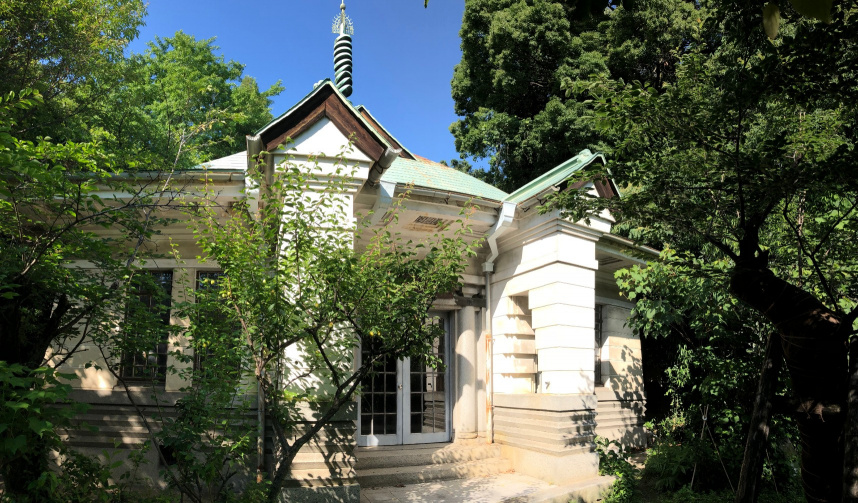 Commentary from Japan Tourism Agency
Commentary from Japan Tourism AgencySanyo Buntokuden Memorial
Table of Contents

This building, modest in size but displaying a curious blend of Western- and Japanese-style architecture, managed to survive the atomic bomb blast despite being located just 1,820 meters from ground zero. The Buddhist-style Kurin Tower, which rises from the building’s belfry, was warped by the heat of the blast and has been retained to this day in its damaged state. Sanyo Buntokuden stands next to Tamonin Temple, by the foot of Hijiyama Hill in the south of the city. Tests have revealed that soil on the hill today still includes a percentage that “experienced” the atomic blast (it is now perfectly safe), and Sanyo Buntokuden itself is home to two cherry trees that were scorched in the bombing.
The building was constructed in 1931 to mark the centennial of the death of Rai Sanyo (1780–1832), a prominent Confucian philosopher and scion of a Hiroshima samurai family. The Japanese-style tiled roof is supported by hefty, European-influenced reinforced-concrete walls, which appear to have helped the structure withstand the devastation wrought on August 6, 1945. At the time of the bombing, the building was being utilized as an emergency storage facility for city hall’s family registration documents. Eyewitness accounts tell of these mountains of paperwork being scattered by the bomb’s blast wave but somehow surviving intact. Sanyo Buntokuden is not currently in use and is closed to the public, but is maintained as a memorial.